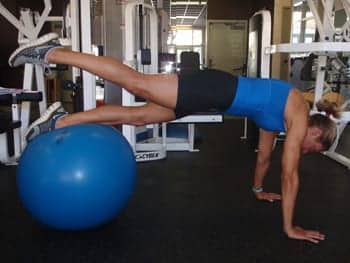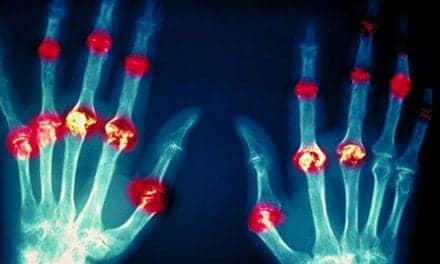Case study in restoring shoulder function at an elite level after dislocation
by Christopher Pogson, FAAOMPT, MPT, OCS
A professional triathlete suffered a dislocated right shoulder joint immediately after a high volume swim workout while performing a seemingly benign upper body exercise in an overhead position. The shoulder could not be reduced by anyone on-site, and the athlete, Emma-Kate Lidbury, was taken to a nearby emergency department. Since that time, I have been treating Lidbury at my orthopedic/sports physical therapy clinic in Santa Monica, Calif. Remarkably, 16 days after the incident, Lidbury returned to competition and won her fifth Ironman 70.3 title. This case study is intended to provide insight into Lidbury’s ongoing treatment and recovery process.
First steps: Lidbury initially planned to race 9 days after the dislocation, so the opening concern was whether she could safely compete under race and competition level intensities without jeopardizing the long-term outcome for her shoulder. Since Lidbury had never dislocated in the pool, there was optimism that she would tolerate the swimming mechanics without significant instability. The complicating factor could be contact with another athlete in the open water. Triathlon races involve mass swim starts with athletes lining up alongside each other at close proximity, and there is often a great deal of physical contact as they jostle for position in the opening stages of the race. This only served to enhance the high risks involved in competing.
Ultimately, it was decided that racing so soon after the dislocation would not be possible due to limited range of motion, compromised strength, persistent apprehension, and an inadequate amount of time to test and retrain the shoulder under race-simulated intensities.
A customized rehabilitation program was established to begin stabilizing and strengthening the weakened joint. The treatment plan was directed toward facilitating the immediate healing phases in order to restore pain-free joint mobility and, more importantly, maximize her dynamic stability via neuromuscular control in an effort to provide stability to an already hypermobile joint. The rotator cuff muscle group was an immediate target using resistance bands in a stable position.
Daily exercises were set to try to improve functional mobility as well as a strength program, which was undertaken three times a week in clinic. The upper right quadrant was inflamed, and every session was followed with ice packs applied to the shoulder and anti-inflammatories taken. Ultrasound was directed toward her right middle thoracic spine to help address movement restrictions in her costovertebral joints as well as her middle trapezius and rhomboid muscles.
Working to rehabilitate an elite endurance athlete provides a unique set of circumstances. Musculature obviously tends to be of high quality that provides stability across joints and allows for rapid introduction of higher level neuromuscular reeducation exercises. Flexibility issues can be a little more challenging given the high volume of training inherent to a professional triathlete’s program. Manual therapy techniques are important to address mobility deficits that may interfere with normal biomechanics, for example, thoracic spine stiffness interfering with scapulohumeral rhythm.
Of particular concern are the issues of stress reactions and stress fractures due to the high volume of training. These can be difficult to differentiate from less serious soft tissue overuse problems, but must be identified early to prevent more serious injury. The goal of Lidbury and her team is to remain training consistently throughout the year, so we are always working to avoid any injury or setback that might necessitate a long break from training.
Managing pain and apprehension: Lidbury was able to return to swimming and activity within 48 hours of injury, but was doing so tentatively. Confidence needed to be reestablished in the joint, which could only come from continued strength and stabilization work. After several sessions, although apprehension remained, she reported being able to swim with more confidence. The joint remained inflamed and after some sessions was treated with ultrasound.
Examples of exercises undertaken:
• Resisted external and internal rotation
• Closed chain dynamic stabilization exercises—quadriped, planks, Swiss ball stabilization
• Seated row
• Bicep/tricep with scapular stabilization focus
• Glenohumeral and scapular stabilization
Athlete perspective: For the past 8 to 10 years, Lidbury has had right side shoulder weakness with five incidents of subluxations, usually with the arm in overhead positions. Although the possibility of surgery had been previously discussed after the last subluxation in 2010, Lidbury instead chose to follow an intensive rehabilitation program in her native United Kingdom. This was successful and no further incidents occurred for more than 3 years.
Managing apprehension continues to be an issue for Lidbury but one that has improved as she has progressed with the strength and stabilization program practiced in the clinic. Strength both in the water and on dry land has improved significantly and has translated to more efficient swimming, although there is still plenty of room for improvement and development.
Since pain was not a significant factor in the management of Lidbury’s injury, topical analgesics were not used in clinic except for ice after exercises during the acute phase of her dislocation in order to reduce particular swelling. During bouts of heavy swim training, Lidbury has incorporated a topical analgesic into her daily regimen to help lessen muscle inflammation and soreness. It contains pure ethereal mint oil extracted from Mentha arvensis and has a high menthol content. As a cream lotion, it is easily applied to joints/muscles whenever required by the athlete.
Prognosis: Normally, the risk of redislocation in an athlete of Lidbury’s age is low when compared to the risk of younger athletes and data would support this. Nevertheless, the risk of redislocation must be taken seriously, especially in the presence of an open water ocean swim.
Overall, Lidbury’s long-term prognosis is very good due to several factors. Her athleticism and commitment to training will help maintain a high degree of neuromuscular tone providing dynamic stability to her glenohumeral joint. In addition, she does not have a significantly unstable joint, so we would not expect to see symptoms of chronic instability. However, given the high intensity training and forces applied across her shoulder, it would be reasonable to think that occasional symptoms relating to secondary rotator cuff impingement will manifest themselves.
The treatment and rehabilitation of this top level endurance athlete have arguably been enhanced and expedited by her excellent level of physical fitness and willingness to commit to the daily regimen required to yield improvements. There are still certain exercises deemed “off limits,” for example, any exercise that involves significant overhead reach, but the range of motion, strength, and stability in the affected shoulder joint are significantly improved and long-term prognosis is very good. RM
Christopher Pogson, FAAOMPT, MPT, OCS, has more than 12 years of clinical experience in orthopedics, sports medicine, and neurologic physical therapy. Before establishing his Santa Monica, Calif-based practice, Pogson Physical Therapy, he worked at the UCLA Sports Physical Therapy Center for 5 years. Pogson was awarded the Kaiser Los Angeles Orthopedic Manual Therapy Fellowship, during which he studied complex orthopedic injury management. For more information, contact [email protected].






